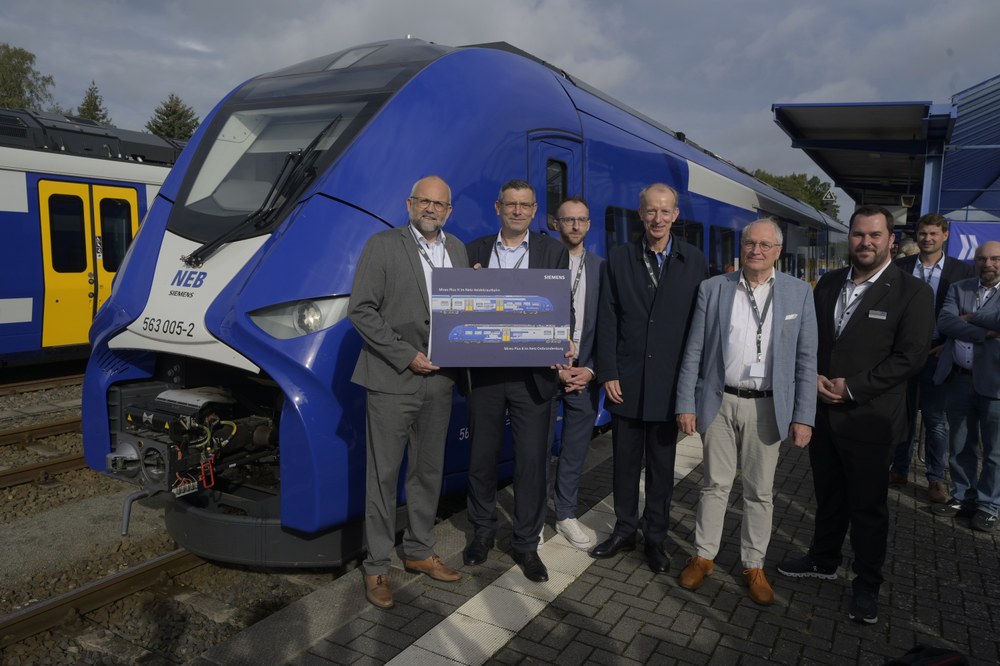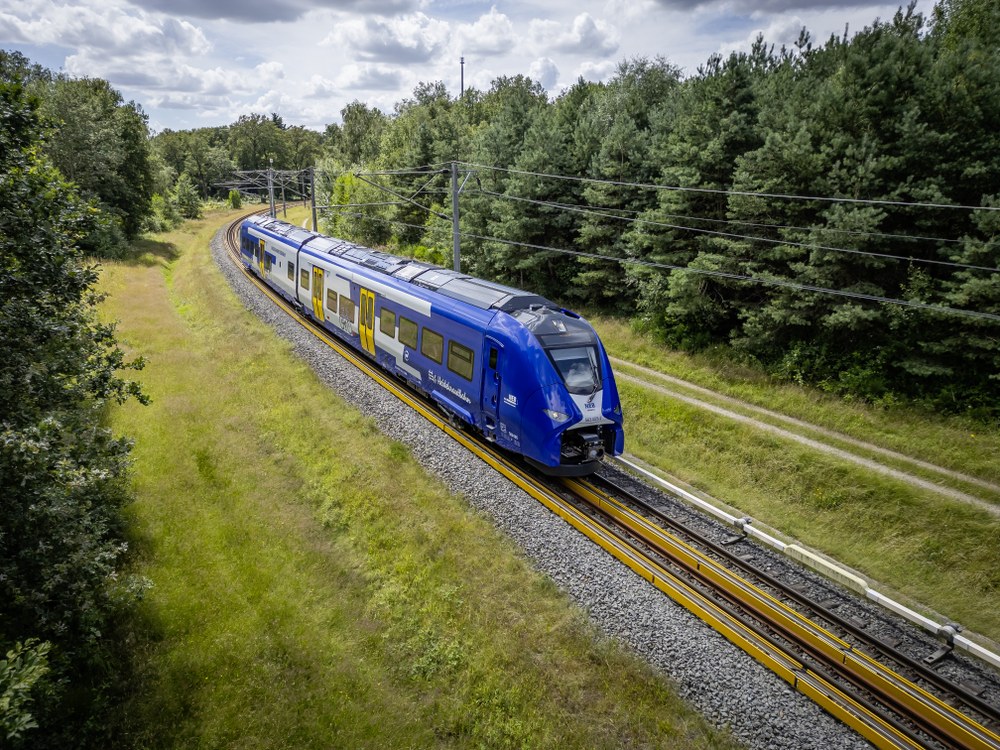In focus: Practicality, costs and environmental impact
"During the term of this project, DLR will provide comprehensive scientific findings on the practicality of the hydrogen refuelling station and the fuel cell multiple units in regular passenger use, as well as on the cost and environmental impact," explains Mathias Böhm, who is in charge of the project at the DLR Institute of Vehicle Concepts. The accompanying research will run until 2035 and is an integral part of the project. The project participants - Niederbarnimer Eisenbahn (NEB), the energy technology company ENERTRAG and the energy supplier Barnimer Energiebeteiligungsgesellschaft (BEBG) as well as many other supporters from industry and research - assume that the alternative and locally emission-free trains will save around one million litres of diesel fuel per year. The first ride for media representatives took place on 25 September 2024 at InnoTrans, the leading international trade fair for rail and transport technology in Berlin.

NEB/C. Bedeschinskui
Gathering a treasure trove of data for precise evaluation
A total of seven "Mireo Plus H" fuel cell trains from the manufacturer Siemens Mobility are to run on the Heidekrautbahn. The project aims to show that CO2-free railway operation is possible without the expansion of electricity storage systems and grids or load management. In the medium term, the use of fuel cell trains should cost just as much as the existing diesel-powered trains.
DLR already supported the design of the hydrogen refuelling station during the preparatory phase by contributing its experience from comparable hydrogen rail projects and its extensive expertise in the fields of hydrogen technology, rail transport and infrastructure to the project. The researchers have also installed measurement technology in a diesel-powered reference train and carried out initial evaluations - for example, to precisely analyse diesel consumption as well as maintenance and personnel costs. They have also analysed the demand for hydrogen in the region.
New trains provide comprehensive data: Detailed evaluation of vehicle operation and infrastructure utilisation possible
The fuel cell trains and the hydrogen refuelling station will also be equipped with comprehensive sensor technology. "From the start of operation, we will have data from the trains and refuelling station for our analysis every second," explains DLR scientist Böhm. The researchers will use this data to check their digital models, which simulate vehicle operation and the refuelling infrastructure. "This allows us to record and analyse the technical and economic relationships in operation very precisely. From this, we can derive concrete proposals to further improve vehicle operation and infrastructure utilisation and reduce costs," Mathias Böhm continues. Other similar projects can then also benefit from these findings.

